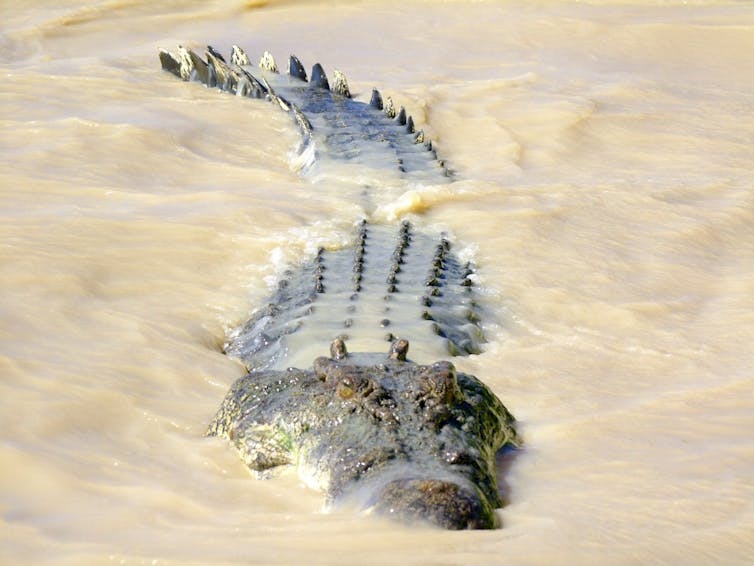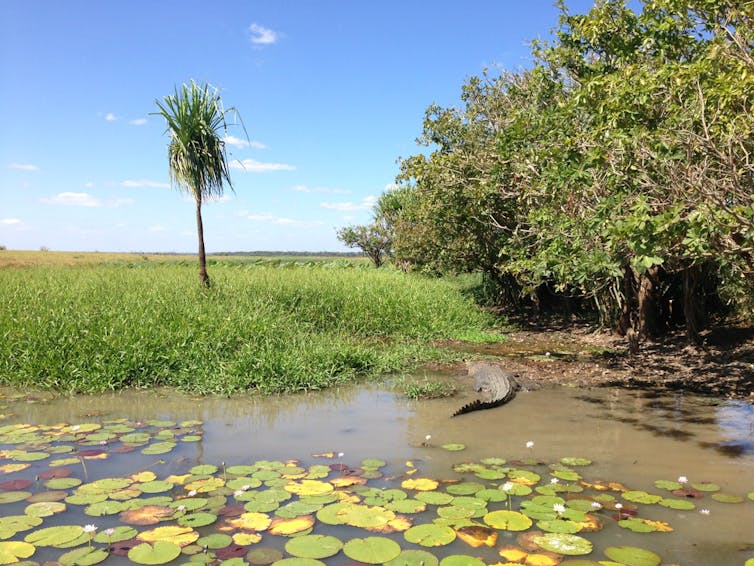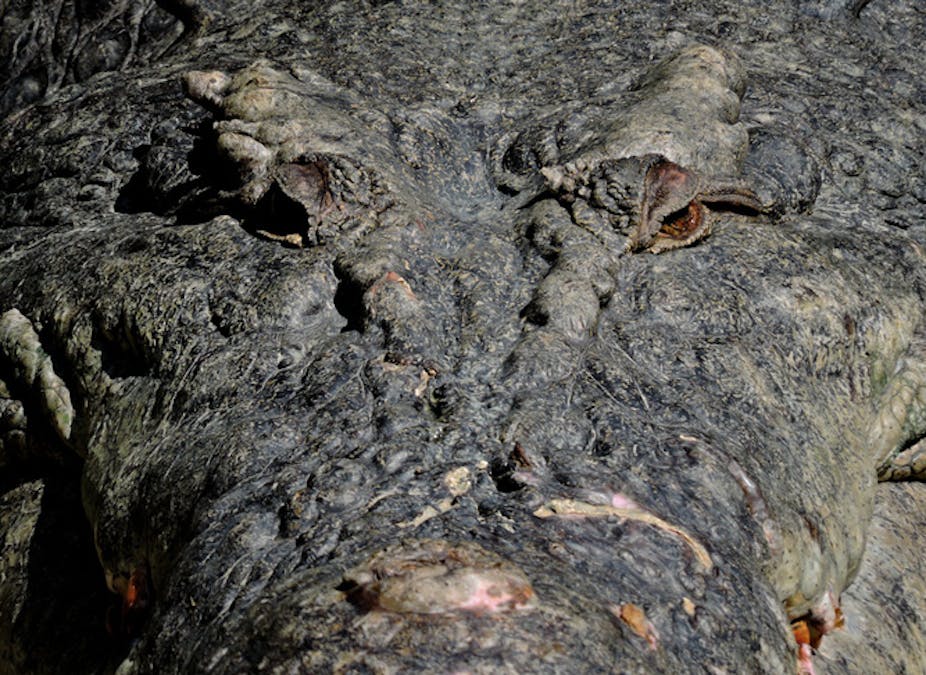The death of Berry Springs farmer Tran Van Lanh is the third confirmed crocodile-related fatality in the Northern Territory this year, and has left many people anxious about what they see as a growing problem.
They may well be right. Crocodile numbers have bloomed in the Territory over the past four decades, and crocodile attacks on humans seem to be gradually getting more common.
It’s natural to ask what we can do to prevent future tragedies like this. But one of the most common suggestions – widespread culling – risks throwing away hard-won gains in crocodile conservation, without necessarily removing the danger.
A brief history of crocodiles
Visit any local pub or boat ramp and you’re likely to hear long-term Territorians claiming that they’ve never seen so many crocodiles. That’s probably because few have been around long enough to remember the time before unregulated post-war hunting for skins and trophies reduced wild populations by more than 97%.
Since being protected in 1971, saltwater crocodiles have bounced back with a vengeance. They are now considered almost fully recovered, with populations in most tidal rivers at or near their carrying capacity.
Crocodiles are integral to the Territory’s economy, attracting tourists and supplying the world’s best crocodile leather. The NT government also oversees a sustainable wild egg harvest (increasingly by indigenous people), while removing “problem crocodiles” from high-risk areas and funding the CROCWISE community education and awareness campaign.

The Territory is rightly considered a world leader in crocodile management, and has fewer attacks on humans than other countries nearby despite having healthier crocodile populations.
True, the number of attacks has increased, but it’s important to keep some perspective. Since 1971 there have been 117 confirmed attacks by saltwater crocodiles in northern Australia, 71 of them (60%) in the NT. Twenty of those were fatal. An average of one death every two years is low compared with other causes of accidental death, or even with other animal-related fatalities. The Gates Foundation reminds us that, globally, dogs kill 25 times more people than crocs do, and mosquitoes kill 750 times more.
Crocodile attacks make big headlines, perhaps because in many people’s minds they are a more chilling prospect than the idea of catching malaria.
How do we keep people safe?
First, we need to recognise that these attacks are outliers. The existing NT crocodile management program works remarkably well and undoubtedly saves many lives. Almost all documented attacks would have been avoidable with better safety awareness and less risky behaviour. Typically, people become victims because they underestimate risks. Unsurprisingly, alcohol is often a contributing factor, although we are not suggesting that was the case in the most recent attack.
We also need to recognise that attacks are random. As with shark bites in Western Australia, clusters of incidents do not necessarily mean the problem is becoming dramatically worse. They might just be a blip in the numbers.
Within 24 hours of the most recent attack, NT Chief Minister Adam Giles wisely ruled out a “knee-jerk reaction” to the death, although understandably the crocodile involved was killed.
Giles flagged the need for a well-developed plan that balances conservation and public safety, but suggested that culling and safari hunting are long-term policy options.

Hunting and culling?
Safari hunts, typically run by private operators under government tender, are highly contentious. They can have local benefits, particularly for Aboriginal landowners. But the proposal to hunt on private land, typically removing low numbers of crocs, would do little to improve human safety in popular areas.
The other proposed option is culling. The NT already culls up to 500 crocodiles a year, mostly from the exclusion zone around Darwin. The low frequency of attacks in this area seems to support this approach, yet it does not exist in a vacuum; it is complemented by the CROCWISE campaign that saturates the local community, schools and media with crocodile safety information. It’s simply not feasible to do this across the whole Territory.
The main problem with culling crocodiles centres around perceptions of safety. Culling advocates are fond of citing a time when it was considered safe to swim in rivers, yet such a time never existed. Even in the early 1970s, when crocodiles had been all but eliminated, there was still a risk, and the lower attack numbers presumably also reflected the smaller human population 40 years ago.
Attacks following protection in the NT began in 1979, when the crocodile population was estimated to be around 20,000. History tells us that reducing the current population (about 100,000) by 80% would still not ensure public safety. It would undoubtedly reduce risk, but at what point does that risk become politically and socially acceptable?

Widening the cull would also hit tourism and crocodile farming. Would the benefit of reducing the current population to a level where attack risk falls to a lower (but not zero) level justify the economic and ecological costs? Many people would say no.
The WA shark cull is a lesson in how not to manage risk. It was implemented without any evidence that it would actually work and came at the cost of a huge hit to Australia’s international reputation for good endangered species management.
A suggested strategy
The NT already has a good crocodile management program, backed up with a public safety and awareness campaign. Rather than white-anting all that with a cull of questionable value, we should instead build on proven strengths.
We still need to ramp up community awareness about the risk of crocodile attack, focusing on high-risk groups. This could begin with extra training for tour operators, fishing charter crews and other local employers who are in regular contact with high-risk groups. We need better understanding of who those high-risk groups are, and why their risk is high. We could invest further in providing safe means to live and work around rivers, including safety barriers around boat ramps and popular fishing spots.
We shouldn’t rule out widening targeted trapping and removal programs from areas where interaction between crocodiles and people is most likely, but we should consider the potential impacts on local tourism operators. After all, tour operators are a significant source of education and awareness about crocodiles.
Australia should be rightly proud of its crocodiles and what it has done to bring them back from the brink. Now is not the time to undo the progress we’ve made.

